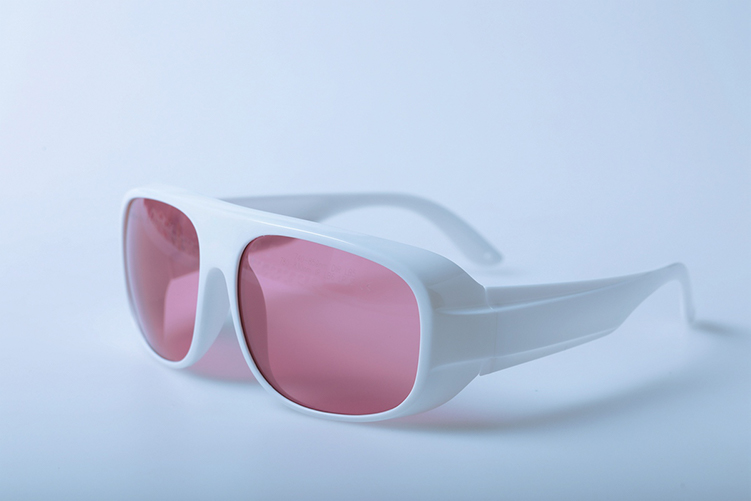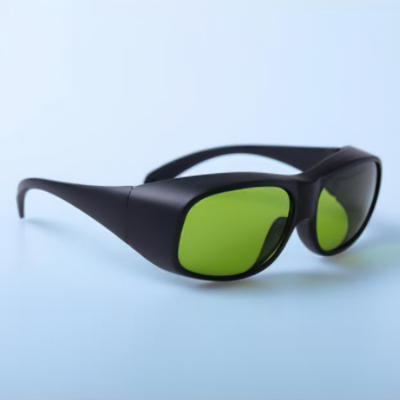Why should we wear laser goggles when operating laser?
As lasers are being used more and more commonly, people may wonder whether it is necessary to wear laser safety goggles during laser operations. Why should we wear them? Let's explore this topic by discussing what laser operations are, their practical applications, and the reasons for wearing laser safety goggles during such operations.
What are Laser Operations and Their Practical Applications?
① Laser operations refer to a series of activities involving the generation, transmission, control, and application of lasers using laser equipment. The generation of lasers (Light Amplification by Stimulated Emission of Radiation) is based on the principle of stimulated emission of radiation in matter.
② The practical applications of laser operations include laser processing, laser medicine, and laser measurement and detection.
a. Laser processing is a significant application area of laser operations, encompassing laser cutting, laser welding, laser drilling, etc. In laser cutting, the laser beam is focused on the material surface, causing the material to melt and vaporize rapidly. By moving the laser beam or the material, a cut is formed, achieving material cutting.
b. In the medical field, lasers are used for various treatments. For example, laser eye surgery utilizes lasers to sculpt the cornea to correct vision problems such as nearsightedness, farsightedness, and astigmatism. In dermatology, lasers can be used to remove tattoos, treat pigmentation, and address skin vascular lesions.
c. Lasers can be used for distance measurement, three-dimensional shape measurement, material composition detection, etc. In laser ranging, the distance is calculated based on the time it takes for the laser to travel to and from the target. For instance, in construction engineering, laser rangefinders can quickly and accurately measure the dimensions of buildings.
Additionally, laser operations are also applied in fields such as communication, scientific research, and military.

Why Should We Wear Laser Safety Goggles During Laser Operations?
a. To protect the eyes from laser radiation damage:
Ultraviolet lasers (100-400nm) are mainly absorbed by the cornea. Due to their high photon energy, short-term exposure to high-intensity ultraviolet lasers can cause necrosis and detachment of corneal epithelial cells. This damage is similar to corneal abrasions, leading to symptoms such as pain, foreign body sensation, tearing, and photophobia. It may also trigger photochemical reactions, and some ultraviolet lasers can penetrate the cornea to reach the lens.
Visible light lasers (400-780nm) can pass through the cornea and lens, focusing on the retina. When the laser power is sufficiently high, it can cause thermal damage to the retina.
Near-infrared lasers (780-3000nm) can penetrate the cornea and be absorbed by the lens and retina.
Mid-infrared and far-infrared lasers (3μm - 1mm) are mainly absorbed by the cornea and conjunctiva. As their energy is primarily transferred in the form of heat, exposure to these laser wavelengths can cause burns to the cornea and conjunctiva, ranging from mild congestion and edema to severe corneal tissue necrosis.
b. To prevent visual interference and glare from intense light: Lasers typically have high brightness. When operators' eyes are directly exposed to lasers, even if the laser power is too low to cause permanent damage, the intense light can cause visual afterimages and glare.
c. To filter out harmful laser wavelengths: Different laser wavelengths pose different hazards.
d. Laser safety goggles can block splashes and reflected light:
Preventing splash injuries: In many laser processing scenarios, such as laser cutting and welding of metals, molten and vaporized metal splashes are generated due to high temperatures. These splashes have high temperatures and speeds, and they may fly into the eyes with significant energy, causing corneal abrasions, burns, or even embedding in the eye tissue, leading to more severe consequences. Safety goggles provide a solid physical barrier for the eyes, effectively preventing these splashes from directly contacting the eyes and reducing the risk of eye injuries.
Reducing the impact of reflected light: When a laser beam hits a surface, it inevitably produces reflected light. Especially on highly reflective materials such as metals or mirrors, the energy and characteristics of the reflected light may be similar to the original laser beam. These reflected lights also pose potential dangers and can cause accidental eye injuries. Safety goggles with special optical properties can effectively absorb or weaken the intensity of reflected light, providing additional protection for the eyes against the hazards of reflected lasers.
Laser safety goggles can protect the eyes from laser radiation damage, prevent visual interference and glare from intense light, filter out harmful laser wavelengths, and block splashes and reflected light. Therefore, it is necessary and essential to wear laser safety goggles during laser operations.
Related Products
Submitted successfully
We will contact you as soon as possible




